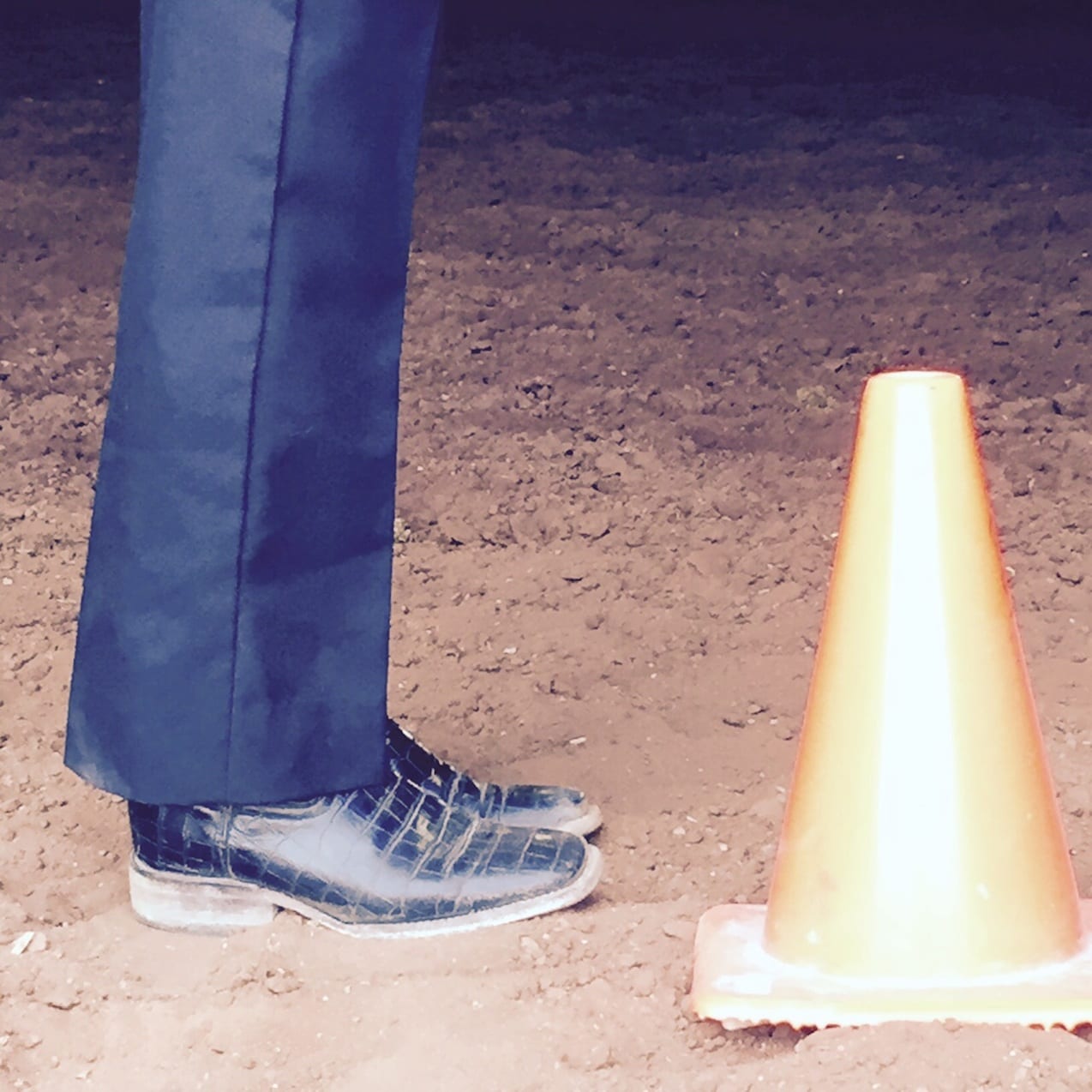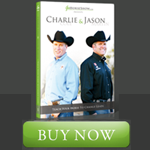Judges, by definition, are an opinionated group. Their job is to evaluate exhibitors, separate runs and place each class. And judges will use every bit of criteria available to determine the winners. While no judge evaluates an exhibitor solely on their outfit, there is no doubt that what an exhibitor wears makes a difference in judges’ minds as they assess contestants. But perhaps not for the reasons you think.
Each judge interviewed relayed a common theme – they are looking for a clean, polished look, one that looks professional and shows respect to the discipline, its heritage and traditions. Many of the judges interviewed repeated the points made by others. The mistakes they see most often are also some of the easiest to correct.
1) Short pants
As one of our best dressed judges, Jill Newcomb has an affinity for all things with bling yet when asked, the fashion faux pas that bothers Jill the most is still pants that are too short. “Perhaps it is because I am tall and can sympathize, but one of my biggest pet peeves is short pants. I understand kids grow, I understand it can be difficult to find pants that are long enough. But when pants are too short, my eye is drawn to the exhibitor’s boots and all I see is feet. It simply does not look finished or polished.” Jill also dislikes it when exhibitors wear their numbers low on their backs just above their hips. “Numbers should be worn between your shoulder blades not at or below your waist.”
2) Mismatched boots
Sara Simons agrees with Jill. “If I can find pants that are long enough so can the exhibitor,” Sara exclaimed. She also finds it important for exhibitors to “match their boots to their pants, especially when the pants are light colored. It completes the look.” Sara tells students, “You have to commit. If you want to wear navy blue, then you commit to navy blue. If you want to wear tan, you commit to tan. I am not saying you have to buy an expensive pair of boots, but I tell my students they need to commit to a color, buy a pair of leather soled boots, take them to the cobbler and have them dyed.” In Sara’s opinion, that is one reason the color black is so popular, exhibitors can easily buy boots and pants that match. A streamlined look is always the best and for showmanship, Jill and Sara are looking for a clean polished look. Anything that distracts when the exhibitor is running, like pants that are too short and boots of a different color, detract from the overall performance.
3) Tight white pants
For Melissa Dukes, it is “tight white pants. White pants are a difficult look for anyone to pull off,” Melissa indicated. She suggests, “Exhibitors wearing light colored pants should make sure the pants fit properly are lined. A lined pair of pants will hang better especially when the fabric is a light color. It is simply a tough look to pull off and having the right fabrication and fit is imperative if you are to do it successfully.”
4) Messy hair
John Briggs finds messy hair to be telling of the efforts made in the presentation. It is a significant detail and John feels “as though exhibitors did not put forth their best effort” when hair is messy. A neat clean look tells John that the exhibitor not only cares but “paid attention to the details that go into a good presentation. I am looking for a neat, clean and finished look. Unkempt hair does not portray a well-prepared exhibitor. It is all about presentation and that includes neat hair.”
5) Excessive fringe on jackets
Clay MacLeod doesn’t like to see anything that takes away from the rider’s overall look like excessive fringe on jackets. “Besides looking rather silly, it makes for a lot of unnecessary movement. It is very distracting, especially in horsemanship and showmanship,” Clay said. “Also, excessive ornamentation on hats such as cowhide, exotic leathers and sequins.” Clay referred to himself as old-fashioned however he is not alone in his opinion.
6) Disregard for tradition
Many judges spoke up regarding an exhibitor’s respect to traditional values of the discipline in attire. Clay Farrell indicated he doesn’t like, “anything that takes my eye away from a beautiful rider on course. That could be a brightly colored shirt, boots that are too short or an oddly colored hunt coat – anything a traditionalist might find unacceptable.” Clay makes it clear that he would not hold it against an exhibitor, but may use it in a tiebreaker situation especially in an equitation class.
7) Poorly fitting chaps
Suzy Jeane maintains, “No matter how good your leg is, I cannot see it if your chaps are too big.” It is a problem all too common. “I see chaps that are too big on top, the thigh or hip as well as at the lower leg and ankle. Either way, if you want me to see how good your leg is, I have to be able to see your leg. If your chaps are too big, I simply cannot see your leg.” Suzy recommends, “Spending the money on custom chaps for the best fit and look. It is just about impossible to find a pair of chaps that fit correctly off the shelf.”
8) Appropriate attire for age and body
Gayle Lampinen helps fit clients in outfits that are appropriate for their age, their body type and their horse’s color. She finds certain colors seem to have an age limit and likes to see riders beyond 13 & under in darker hues when wearing colors. Gayle finds it offensive when she sees pants too tight or pants worn without appropriate undergarments. It plays to the same theme we have heard throughout – nothing that diverts the judge’s eye or devalues the overall performance.
9) Hair net bun covers
While still quite popular in some breeds, dark colored or crocheted hairnets are not used in most stock horse breed shows. Chris Thompson tells students to, “use natural colored, thinly woven hair nets to keep hair in place with lots of hair spray if necessary.” Like the other judges, Chris is looking for a streamlined look and finds the dark bun covers draw negative attention. “Anything that grabs my attention takes away from the overall look. If it disrupts the flow of the outfit, it is a negative for me. Heavy dark hairnets stand out and look out of place.” Chris agreed with John Briggs, “neat and tidy; clean and professional.”
10) Heavy soled boots
Rhonda Replogle makes sure all of her students wear a leather-soled boot. She especially does not want to see thick rubber soled boots in halter and horsemanship classes. “Thick rubber soled boots look like work boots and are not appropriate or dressy enough for the show ring, no matter the size of the show. A smooth leather-soled boot presents the most professional look in the show ring,” Rhonda indicated. “And in riding classes, leather soled boots allow your foot to hang in the stirrup properly. It is also a safety factor, thick soled, rubber bottomed boots do not slide in the stirrup as a boot is intended to do.” Rhonda suggests students look at ropers that are very economical and can be purchased in a variety of colors.
The overriding theme with the judges I spoke with was clean lines and nothing that disrupts the flow of the exhibitors’ performance by drawing the eye away from the overall look. While exhibitors are encouraged to express their individuality in the show ring with their outfit, it is important to heed the judges’ thoughts. Exhibitors are trying to build a positive impression with the judges and any distraction becomes neutral at best. Happy Shopping!









